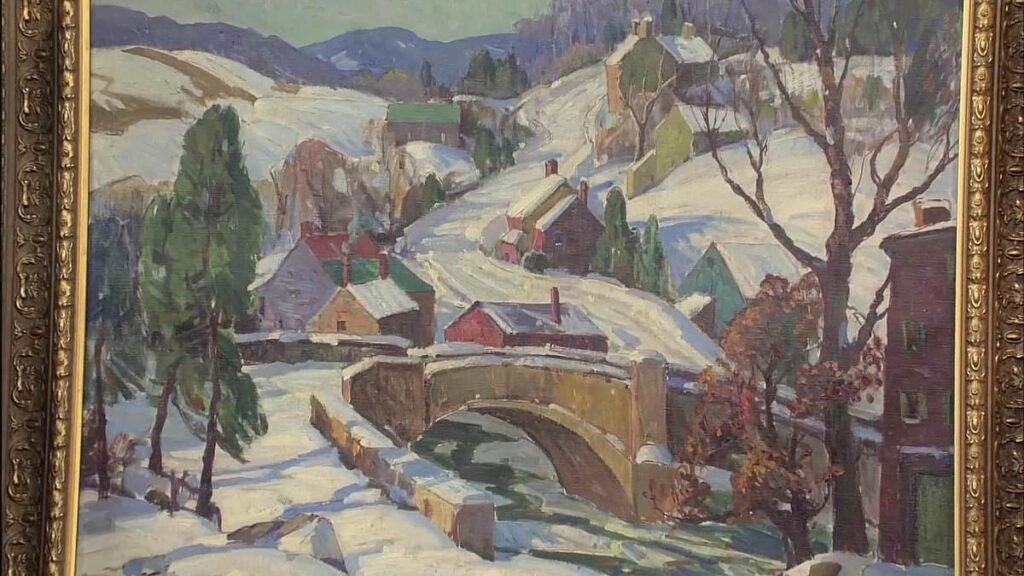By Ishita Srivastava For Dailymail.Com
20:40 18 Jul 2024, updated 21:12 18 Jul 2024
An Antiques Roadshow guest was lost for words after she was told the appraised value of an impressionist painting from 1925 that was passed down in her family through generations.
The guest showcased the 30x36in painting made by artist Fern Coppedge, which had been gifted to her surgeon grandfather in Philadelphia by the artist herself.
The vibrant piece of art, painted in oil on canvas, showed a snow-covered river and bridge scene from Conshohocken, Pennsylvania called ‘Goat Hill’.
Coppedge was an American painter associated with the New Hope School of American Impressionism, and her winter scenes are considered to be some of the artist’s best-known paintings.
The guest quickly told the appraiser that the piece had been gifted by Coppedage to her grandfather as ‘gratitude for the surgery that he performed on her’.
She explained that the piece had stayed with her parents for a few years and was then passed down to her.
After understanding the history behind the painting, the appraiser explained: ‘Coppedge is, she was originally from Illinois and then studied in Chicago and then moved to Philadelphia, where she had a studio.
‘She’s best known, though, for her work done around New Hope, where she moved in 1920.
‘And she’s associated with a group of artists known as the Pennsylvania Impressionists. And of that group, she’s probably the best known of the women artists.
‘She was her own woman, and I really admire her for that. Her sense of color was just extraordinary. She was basically a Fauve painter and very adventurous in the way that she chose to work and to portray the area.’
He also noted that the size of the piece made it even more rare as the legendary artist usually painted on an 18×18 or 20×24 canvas.
When asked about the newer-looking frame, the guest explained that she had replaced the original one since it had broken to pieces over the years and was held on by mere tape.
Hearing this, the appraiser expressed dismay and said: ‘It may well have originally had a frame by either Harer or Badura, who were the two leading frame makers in that area and she often used those for her works.’
By the end of the evaluation, the appraiser told the guest that while he estimates that the painting could be valued between $120,000 to $180,000, it could easily be worth about $200,000 in value.
Click here to resize this module
‘You’ve taken my breath away! I’m stunned, I’m totally stunned. I didn’t even think about bringing this. This was a last-minute… “Oh, well, why don’t we take this one, too?”,’ the surprised guest said after hearing the valuation.
The expert went on to say that he could see the beautiful painting fetching even more than $200,000 at auction.
The guest, who held her hand to her chest in amazement, beamed from ear to ear as she took in the good news.
Born as Fern Isabel Kuns on July 28, 1883, Coppedge first visited New Hope in 1917, and settled nearby three years later.
As the decades followed, she often wore a bearskin coat to paint her now-iconic scene outside in the frigid winter air. She died on April 13, 1951.
Her paintings are currently on display at the Philadelphia Museum of Art, the James A. Michener Art Museum in Doylestown, and the Reading Public Museum in Pennsylvania.






